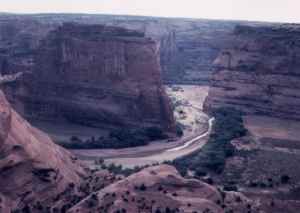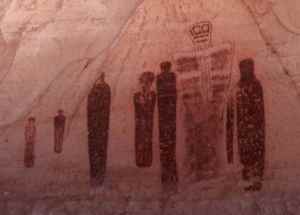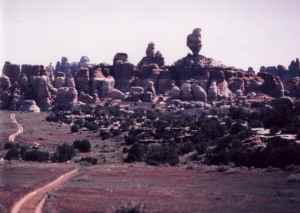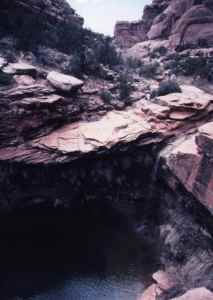

 Several clarifications first. I am not an archeologist, just someone who enjoys
the outdoors and both our natural and cultural heritage. Technically, the
term "Anasazi" refers to an ancient pueblo culture which
flourished in the 4 corners region from about 700 AD to 1300 AD. However, I will
include in this section, pictures of artifacts from not only the Anasazi, but also
the roughly contemporary Mogollon, Hohokam, and Fremont cultures, all located in
the desert southwest. I also include pictures of some pictographs from the archaic
period, ending roughly 400 BC.
Several clarifications first. I am not an archeologist, just someone who enjoys
the outdoors and both our natural and cultural heritage. Technically, the
term "Anasazi" refers to an ancient pueblo culture which
flourished in the 4 corners region from about 700 AD to 1300 AD. However, I will
include in this section, pictures of artifacts from not only the Anasazi, but also
the roughly contemporary Mogollon, Hohokam, and Fremont cultures, all located in
the desert southwest. I also include pictures of some pictographs from the archaic
period, ending roughly 400 BC.
Second, I discuss some of the popular and well known national parks and monuments. However, many of these pictures are of lesser known artifacts, often in more remote locations. In order to help protect these unique artifacts, I will not divulge their whereabouts - so don't ask. Suffice it to say the best protection for many of these artifacts is that their locations are either little known, or very difficult to reach, or both.
Anasazi ruins dot the desert southwest, especially the four corners region. Ruins range from the famous large ruins of Mesa Verde and Chaco Canyon, to small granaries and individual houses located in remote canyons. While the largest ruins are preserved in National Parks, due to the nature of the visitations they tend to be somewhat sterile. In you make the effort to research and then get to some of the smaller ruins, you will often find much better preserved and pristine ruins. Of course the reason they are better preserved is a) because they are less well known and harder to get to, they receive much less visitation and hence less wear, b) generally those who make the effort to locate and reach these ruins have more respect for them and treat them better than the average tourist at Mesa Verde.
Rock Art consists of pictographs and petroglyphs. The most ancient are the archaic petroglyphs dating from 500 BC or earlier. The most prevalent rock art in the Southwest is from the Anasazi period, but rock art of cowboys in the 1800s to tourists in the present can be found.
 |
 |
 |
Some of the landscapes of the Anasazi boggle the mind, such as the panorama on the left. The beautiful waterfall and clear cool pool on the right must have been as inviting on a hot summer day to the Anasazi who lived in this canyon, as they were to me, 700 years later. |  |
This page contains Links to National Parks & Monuments pertaining to Anasazi culture.